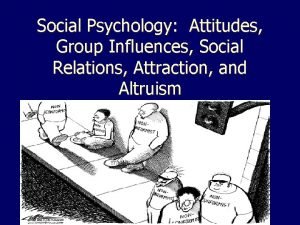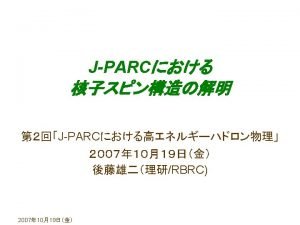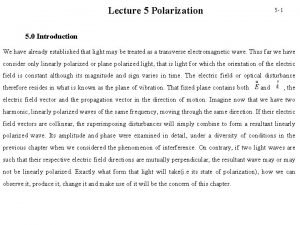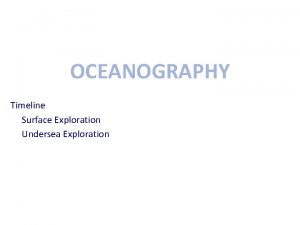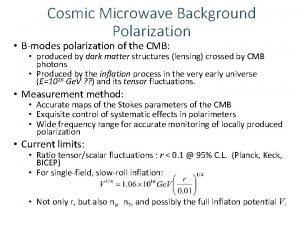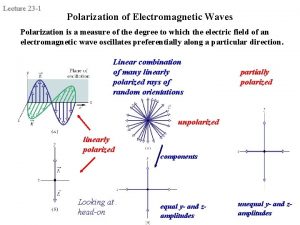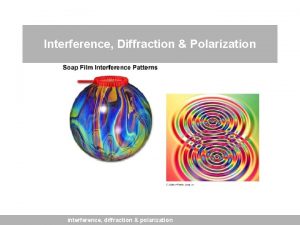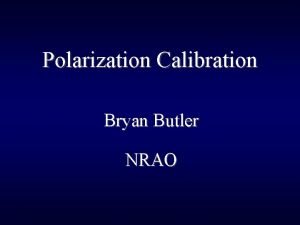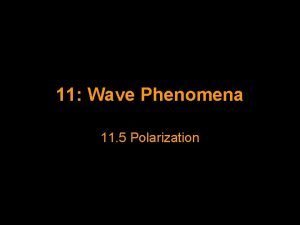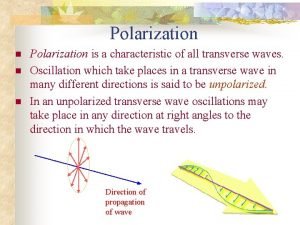Party Polarization A deeper Exploration Party Systems Party



















- Slides: 19

Party Polarization A deeper Exploration

Party Systems • Party polarization – Sharp divisions between the two parties – Congress is most polarized today since 1956 – Measured in Congress using roll call votes • Party unity: frequency and strength – How often does the party vote as a cohesive bloc? – How strong is party bloc vote: unanimous, 90 percent, or 60 percent? – Measured in public opinion as well • Party identification, election margins of victory

First Some Graphic Representations • For each of the following graphs, write down at least 2 things that they tell about the nature, depth and/or causes of polarization for discussion in class tomorrow.






What produced the present polarization? • 1. Not Historically this way • 2. The Constitutional system does make it all too possible • 3. The evolution of the present deadlock • 4. Structural basis for polarization: demographics and districts

Not Historically this way – True after the CW radical republicans v. Burbon Democrats • issues of reconstruction – Post WWI , great depression, WWII polarization went way down , – low immigration also a factor • Sense of shared national identity takes time.

The Constitutional system does make it all too possible – Founders presumed “republican virtue” among the citizenry – • Jefferson = yeoman farmers, • philosophical blacksmith – Different constituencies for House, Senate, President mean that polarization and party deadlock is possible.

The evolution of the present deadlock – The counterculture and the 60’s – Enter Nixon. . • Vietnam and the anti-war • An affluent working class – silent majority • Southern Strategy – Reagan democrats • Culture wars • Coalition with the Rel Right – Newt Gingrich 1992 • Contract with America

Structural basis for polarization: demographics and districts • Demographics • the arms race in campaign finance • Mobilization of one’s base = negative advertising • technology • Tragedy of the commons: • Democrats don’t need rural or suburban white voters, = esp males

Demographics • The economic decline of the Midwest Rust Belt and the rapid growth in the Sunbelt were also big parts of this process. • It's difficult to draw competitive districts in a deeply polarized country. Americans are geographically segregated along a variety of demographic lines, and most demographic groups side decidedly with one party or the other. • The Lone Star State has 254 counties, 244 of which were won by either Obama or Romney by at least 10 points.

The arms race in campaign finance • These days, the average Senate candidate raises and spends $9 million to win election, which works out to slightly more than $4, 000 for each day of a six-year term. For the average House candidate, it’s $1. 4 million, or just under $2, 000 per day in office (including Saturdays, Sundays and holidays). These sums are several times what they were 25 years ago.

Mobilization of one’s base = negative advertising • the real effect of negative advertising is to – 1. – 2. • Especially effective in primaries and midterm contests. – Now true also in… • another important advantage: • Thus perpetuating the cycle

technology • you can tailor your messages to different groups. • the rise of “independent campaigns” run by PACs, unions, business organizations and other special interest groups has also heightened the polarization.

Tragedy of the commons • The individual pursuit of rational self-interest by parties and politicians, which in political and economic theory is supposed to generate the best outcome, but….

Democrats don’t need rural or suburban white voters, = esp males • Democrats have been constrained since the 1960 s by fear of losing the blue-collar, rural, and older white voters who traditionally made up the conservative end of their electoral coalition. – House Blue Dogs, as well as swing-state and red-state Democrats in the Senate, • In 2012, Obama lost more than three-fifths of noncollege whites and whites older than 45; he carried only one-third of noncollege white men, the worst performance of any Democratic nominee since Walter Mondale was buried in Ronald Reagan’s 1984 landslide. Yet Obama nonetheless won a solid victory by posting strong numbers with minorities (a combined 80 percent), the millennials (60 percent), and college-educated white women (46 percent overall and more in many key states); moreover, each of those groups expanded its share of the total vote. (For the first time, white women with college degrees cast more votes last year than white men without them. )
 Into the heart of jesus deeper and deeper i go
Into the heart of jesus deeper and deeper i go Module 79 ap psychology
Module 79 ap psychology Altruism psychology
Altruism psychology Situational attribution
Situational attribution Charge by polarization
Charge by polarization Group polarization example
Group polarization example Group polarization psychology definition
Group polarization psychology definition Chapter 13 social psychology
Chapter 13 social psychology Group polarization vs groupthink
Group polarization vs groupthink Group polarization example
Group polarization example Depolarization vs polarization
Depolarization vs polarization Polarization ellipse equation
Polarization ellipse equation Half wave plate matrix
Half wave plate matrix Group polarization example
Group polarization example Polarization in physics
Polarization in physics Polarization in chemistry
Polarization in chemistry Depolarization factor
Depolarization factor Linear polarization
Linear polarization Light polarization equation
Light polarization equation Groupthink vs. group polarization
Groupthink vs. group polarization








